
Mythic Bastionland
A downloadable game
Take the Oath and venture into Mythic Bastionland, a tabletop RPG set in the imagined past of Into the Odd and Electric Bastionland , built on the same lightning fast, ultra-streamlined rules system. Designed by Chris McDowall and illustrated by Alec Sorensen.
Try the quickstart for free, with everything you need to run and play a game right away.
Also available in print at Bastionland Press, customers in the Americas should use PlusOneExp instead.
KNIGHTS IN SEARCH OF GLORY
In Mythic Bastionland you begin as a young knight errant, seeking the glory to lead warbands, earn a place in court, and rule your own domain. Glory is found in hunting the Myths of this world, manifesting them into reality while protecting the Realm from their strange influence.
Each player is one of 72 Knights, with personal equipment, a unique ability, and a passion that fuels their spirit. As your glory grows, you might eventually embark on the legendary City Quest, an impossible challenge to find The City itself, a shining metropolis seen only in dreams.
RULES LIGHT, FLAVOUR HEAVY
The streamlined rules support a campaign of exploration, where you traverse your own hex-mapped realm filled with myths, each slowly revealing their omens as you journey through their land. The book comes with 72 of these Myths, enough to know there's always a new surprise hidden in the woods.
Hex-crawling, domain management, ageing, exploration, and mass battles are all handled through fast, streamlined mechanics.
The rules of Mythic Bastionland are fast-paced and rules-light, encouraging creative problem solving and decisive combat. The game is perfect for groups of 1-5 players, plus a Referee, and is designed for both ongoing campaigns that span seasons and ages, and fast-paced one-shots that focus in on a particular adventure of a company of knights.
DECISIVE COMBAT
Nobody ever rolls to hit. You go straight to the damage roll. Every turn you decide to stay in the fight matters.
Use the new Gambit system to push enemies, splinter shields, drag them down from their steeds, and deftly reposition yourself. As Knights you also use Feats to Smite for extra damage, Focus on the perfect tactical manoeuvre, or Deny the strongest attacks of your foes.
This all sits on top of the same lightning-fast combat system familiar from Into the Odd.
A PAST THAT NEVER WAS
Mythic Bastionland is inspired by British folklore, Arthurian legends, and our own myths of the medieval era. I'm especially interested in the lies we tell about history, whether by misconception or design.
Just as this game was written in 21st Century Britain, this world was born from the stories told in Industrial and Electric Bastionland.
A past that never was, brought to life, and a place that you can visit if you know the way.
TESTIMONIALS
"Chris McDowall is one of the best designers in the industry. His ability to cut away extraneous parts of a game is excelled only by his ability to write scant, evocative, unpretentious prose that paints fantastical worlds and leaves fascinating gaps for players and GMs alike to fill during play. Coupled with absurd amounts of Alec Sorensen's gorgeous artwork, Mythic Bastionland is something of a victory lap - McDowall has already proven he's got the chops, and quite frankly this sort of thing is just making the rest of us look lazy."
- Grant Howitt (Spire, Heart, Honey Heist)
“McDowall is the pre-eminent distillation designer of our generation. Mythic Bastionland is pure elegance."
- Sean McCoy (Mothership, Two Rooms and a Boom)
"Mythic Bastionland is a brilliant evolution of its predecessor's rules, marrying them to a setting filled with wonder, dread, mirth and sorrow."
- Ben Milton (Questing Beast, Knave, Maze Rats)
INSPIRATION
- Prince Valiant (Comic, 1937-Present)
- Excalibur (Film, 1981)
- Pendragon (TTRPG, 1985-Present)
- The Green Knight (Film, 2021)
- Elden Ring (Video Game, 2022)
| Updated | 16 hours ago |
| Status | Released |
| Category | Physical game |
| Rating | Rated 5.0 out of 5 stars (31 total ratings) |
| Author | Bastionland Press |
| Genre | Role Playing |
| Tags | bastionland, into-the-odd, rules-lite, Tabletop, Tabletop role-playing game |
Purchase
In order to download this game you must purchase it at or above the minimum price of $24 USD. You will get access to the following files:
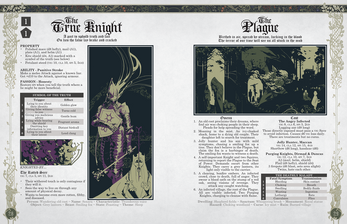
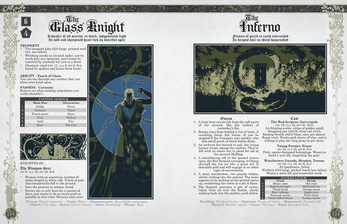
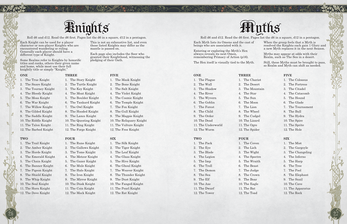
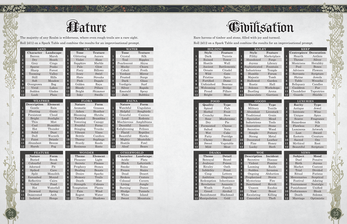

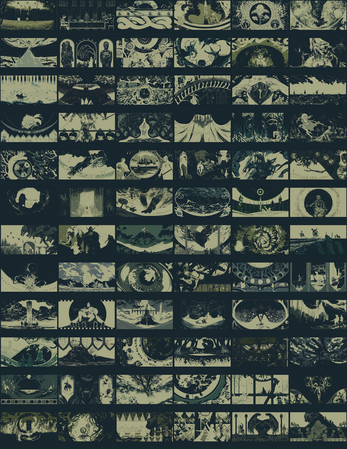
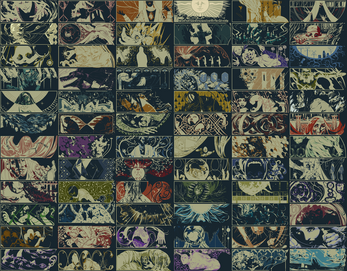
Comments
Log in with itch.io to leave a comment.
hi there. Wondering if you ever do community copies for teachers who run ttrpg groups. Appreciate your time. Take care.
I ran a MB campaign (13 sessions long). It is my favorite fantasy rpg so far. There's no bullshit, dozens of pages about some history I do not care about, only playable content and clear guidelines.
I started the campaign with a hexmap of the realm, the 4 holdings, 6 myths, I placed some markers for the landmarks, but I didnt fleshed them out. I had very simple ideas about the holdings, 1-2 NPCs per holding with just a short description for them. I used a simple premise, the creator used in a youtube actual play I have watched (find the Amber Knight!). And then I have just rolled with it. From session to session the world and the mistery just unfold in front of us. I explored the realm and its misteries with the players. And at the end... It was one of the most dramatic, narratively coherent and exciting fantasy campaign I have ever experienced.
This game redefined my whole view about how to (and what to) prepare before a campaign.
Thanks for sharing. I'm curious on some aspects if you don't mind:
1. myth resolution
the book states that myth are to be resolved. did you ran into problems with that procedure. did all myth play until the 6th omen? Did you decide on the spot and it made narrative sense most of the time.
2. group motivation
was the Oath and initial premise enough to glue the gropu together. Did you made them known each otther long before?
3. stat imbalance and knights
did you had issues with players having significant stat power differences? if so, how did you address it if at all?
4. omen frequency
did omens appear in a frequence that was handlebar, didd you alter the frequency sometimes?
thanks in advance.
Not the person you asked but for 1. there is the "primacy of action" bit in the Refereeing advice on page 16.
Essentially "player actions always come first": if they've already done things that would contradict future omens, it's the omens that change (whether that's being adjusted or simply not happening)
Omens are thus kinda like, "here's the timeline of what happens UNLESS the players change things" (whether that means stopping it or just changing the circumstances). So rules-wise it's entirely possible for myths to get resolved before the 6th omen (but still interesting to hear from dannycrieswolf's experience what happened in practice of course!)
Hi!
1; Myth resolution
I used the Forest, The Goblin, The Plague, The Wyvern, The Underworld, and The River myths in the campaign. I never really find myself in a bad spot. I cheated with the last omen of the River a little bit. The new lake was not born on the hex where the team was standing, but on a neighbouring hex what they saw from a ventige point (They used the portal cloak from one of the Underworld omen to "teleport" into the holding before it was washed away, so they could save 2/3 of the people.)
2; Group motivation
I think if there is a game where you do not have to worry about group coherence this is that game. They are knights, united by their knightly oaths and dreams of the City. In my campaign the knights were sent to a mission by the Dreaming Seer to find the Amber Knight. All came from a different realm, they met on the road, introduced themselves as knights should do, stated their cause and when they find out that they share the same quest, they joined forces.
3; Stat imbalance
Perhaps we come from different gaming culture, but I do not care about "game balance". I think in story and world logic and not in game logic. There was one knight who rolled really good stats (lowest stat was 14 I guess), one with fairly decent stats and one with horrible stats. I didnt meet any issue at all. Honestly I cannot come up with any theoritical situation where I would need game or stat balance. The level of the stats helped the players to imagine their characters. The one with the low stats were the Willow Knight, the player decided to justify the horrible stats by that his character is almost a kid.
4; Omen frequency
I used the rules stated in the book, during travel at the end of each Phase we rolled a d6 and based on the result I introduced an omen, a landmark or - if it was all clear - a little bit more detailed description of the environment. It worked out just fine.
To be quite honest, although I borrowed the basic premise from the author, I didn't use the game as described in the book. There was a "main quest", "find the Amber Knight". This was the reason the party even went to the realm in the first place, and I used the Amber Knight to "tie" the myths together. The whole campaign had an overarching storyline, a family drama between the ruling Chain Knight, his long believed dead wife and his even longer believed dead son (The Amber Knight). I invented an artifact that the knight used to open the door to the afterlife (The Underworld), these machinations upset the balance of nature (The Forest, The River, The Plague) and it was the Goblin from whom he had previously lured this long lost artifact.
The mythos was strung together on a pretty deep and detailed lore, but it's important to note that I wasn't prepared for this at all. I had no idea at the beginning who the Amber Knight was or why he had to be found. I had no idea about the Black Codex, the family drama in the Chain Knight's past. I just ran myths and threw in info via NPCs as ideas came. THE only thing I was very careful about was that information that was already "canon" was not contradicted later. So sometimes I had to sit down between two sessions to think hard, but the story somehow wrote itself, miraculously. I call this technique Schrödinger's Lore :D. Throw in interesting stuff, basically clues on the spot, then later figure out how does it make sense :D It sounds stupid but I swear it works! :D
Thanks again for the excessive insights. I have burning desire to talk more about it so if you indulge me... :)
A. stat imbalance
yea, i "confess" i come from a long history of point buy (shadowrun, lot5r) and if we play random stats we usually allow to roll some sets.
I played Mausritter (raw stats!) with some of my default folks and had a blast (meybe the players did too :D) and i did not experience to much hassle with the stats. mostly because i did not let them even roll when i think their becackground or equipment would justify. So while i guess i got the gist and we played it like this I am still a little... insecure about it. We also have players that are very experienced and good ROLEplayers but are mechanically savy and cant "shake" it up so to say, which brings me to.
B. feat (area attack) spam
Just from reading, it feels like this feat is quite mighty and maybe its worth spaming it as fast as possible in many cases. I feel that it might not unfold as such in play, so i wonder what your experience with the feats were.
C. wilderniss and holdings
Do i got this right, you do not roil while in a holding, hence "omening" stops (is halted) mecahnically. I assume one (the GM) would still progress the omens if it makes sense regardless of the rolls.
D. wilderness and other encounters
OH, did the players know that a wilderniss roll of a specific result spawns an omwn? Did you roll wilderniss in secret? Do you "sprinkle" non omen encounters in there?
E. Seers
Did you meet others ssrs? did the group activly searched them to advice in a myth? did they "feared" the seers?
I am happy if my experience is helpful to you.
Embrace the randomness :D It is wonderful.
B: After you use a feat, the player must make a save with the relevant stat (Smite VIG, Focus CLA, Deny SPI). If you fail the save, you gain Fatigue and you cannot use feats until you take a break (end of combat). My players were quite careful with the usage of Smite, because Deny is a very strong way to save the knights life. I think Focus is quite weak I didnt touch it, but I consider to homebrew it that gambits purchased with this feat are considered strong gambits.
It may depends on the players, luck and the myths you use, but my experience was that the monsters are not hard enough :D I buffed up some of the creatures :D Like I gave the wyvern an ability to regain its Guard every time it is spends a turn in the sky without attacking and taking damage (I also telegraphed this mechanic to the players so they can make informed choices!!!). Later I started to use a homebrew rule for large creatures - Some of the monsters can be harmed by only blast damage or by spending a gambit on scaling up the effect. I gave an npc the ability to always have 1 extra movement, etc.
Also I think most of the time I used battlemaps for the combat (I like cinematic, tactical combat with exciting environments) Nothing fancy, I drew some sketchy maps on the go and used my pretty little glass pearls, that way it was always clear what a blast attack can reach (everything your pearl touches)
C: You roll travel at the end of each Phase spent in the wilderness. You do not roll for Omens when you are in a holding. And no, you do not progress the Myth. They happen when the players encounter them. The only time when you tinker with the progress of the omens when the players actively search for the myth. The example in the book is about players searching for the Wyvern's nest, tough I never really had to make any modification in the order.
D: The players rolled for travel, I didnt explain them the exact method but after a while I think they kind of recognized a pattern: The higher the roll, the more boring the travel is :D
I did not use any other kind of encounter table, but I used some stuff from other myths that wasnt part of the campaign - I used npcs and their inventory from other inactive myths, like I introduced a grim kind of savage npc and I used an npc from the Axe myth.
It is not considered an encounter, but when they rolled "all clear" during travel I rolled up some ideas from the spark table (sometimes out of game when I had an idea for a location or a moody phenomena I noted down and then used in a random place during the game). Of course I always described the details of the environment, but when all was clear, I let myself a little bit more time to do so.
I used the example adventure site from the book, I improvised one during a lunchbreak. I actually prepared another between sessions, but they never visited the place :D great lesson.
E: We didnt have a session zero, but when we created the characters we discussed the setting, the culture, the society, the role of the knights and the seers. Actually I think the biggest change we did before even started to play the game was in the Oath. We didnt like the Seek the Myth part. We felt it was too meta, too gamey. We changed it into Seek the City. I imagine it is not a necessary thing for a lot of table, but it worked for us pretty good. They did asked about and searched for the seers in the realm. My players are quite experienced and are eager to immerse themselves into the setting (That is the reason why we discussed for like at least an hour the oath and the knights' place and role in the society). Based on the seers annointed the PCs, the players had a pretty good grasp of the - sometimes inhuman - nature of the seers, but I try to enforce during the game the weirdness of these npcs. If you take some advice, be super weird when you play the seers, The description of them are pretty useful, but be ready to incorporate some random elements. They met the Hanged Seer in the crossroads, the naked ascetic man, with strange encarvings in his body tried to hang himself desperately on a tree. The knights helped him out. Sometimes I rambled random bullshit, which kind of foreshadowed omens from myths they didnt encounter yet. (EDIT: The little poems of each myths are really helpful!) It helped me and the players embrace the out of time and place nature of these strange creatures. I also used the Salt Seer, who cannot even speak, if the characters lick his salt, they gain strange visions. It helped them out, one of the character took some salt with him and later when they left the sanctum asked advice from the seer by eating the salt.
What is the "No BG" version of the PDF?
No BG = No BackGround, it's the exact same except without the "paper texture" background image on the pages (except the "credits" page at the start)
I think it's to be better for printing, as well as if some find it easier to read!
Hi, is there a plan for a print run outside of the original Kickstarter?
What jacob said.
From what I've heard, as part of the kickstarter is that yes there will be right after the kickstarter is completed.
I started a campaign with my 3 regular players and I as a GM am having a blast.
At first I was a bit worried that the automatic mechanic used for encountering myths omens as the knights travel would make adventuring somewhat passive, but in reality, with just a bit of human drama between holdings, picking unused knights as NPCs to act as the players rivals, and using the weirdness of the seers and their wants, I have a bunch of exciting threads in my Realm on top of the myths. It almost runs itself and between session prep is quick and fun.
Combat is always quick and dynamic, all our fights so far have been close calls and lasted exactly 3 rounds.
The art in the book is gorgeous, I wish we could get some of these pictures separately, they'd make great posters or wallpapers.
Awesome game! We just started an adventure. If you have multiple extra dice over 4 are you allowed to select the bolster gambit multiple times? I tried to scour the examples but most dice results only showed 1 damage die and 1 gambit die being used. A Forge Knight wants to know :)
I think you can, you just don't get anything extra for a high die value used for bolster. Allowing multiple bolster creates an interesting choice for the players: shall we try and take this thing out right now, or shall we impair it's next round and stay a bit safer.
...if there's any shot of you having decks of the knight and myth art printed, I'd most likely buy both.
Agreed. Like some of the Myths art would be amazing in super hi-res. I'd probably buy a Mythic Bastionland artbook, tbh.
I'd absolutely buy an artbook or deck. And I'd love a new print run as someone who missed the Kickstarter.
The book is now for general sale! (started right after all the backer shipments were sent out essentially)
Amazing art and worldbuilding, Chris, Alec and team.
Played a one-shot today and had a ton of fun! My Moat Knight's magic shovel was a real joy to try and find a use for, and our Company put down the threat of a nearby ogre with an alligator's aid. Surreal chivalric delight!
This is like a brainstorm of fantasy adventures with knights inside Merlin's stomach on hallucinogens.
It's amazing.
This is the game you want.
That is all.
But it gives me my fantasy of powerful knights with their foibles and ability to craft our own stories.
Big congrats for the release, Chris and team!
This is exactly what I’ve been waiting for.